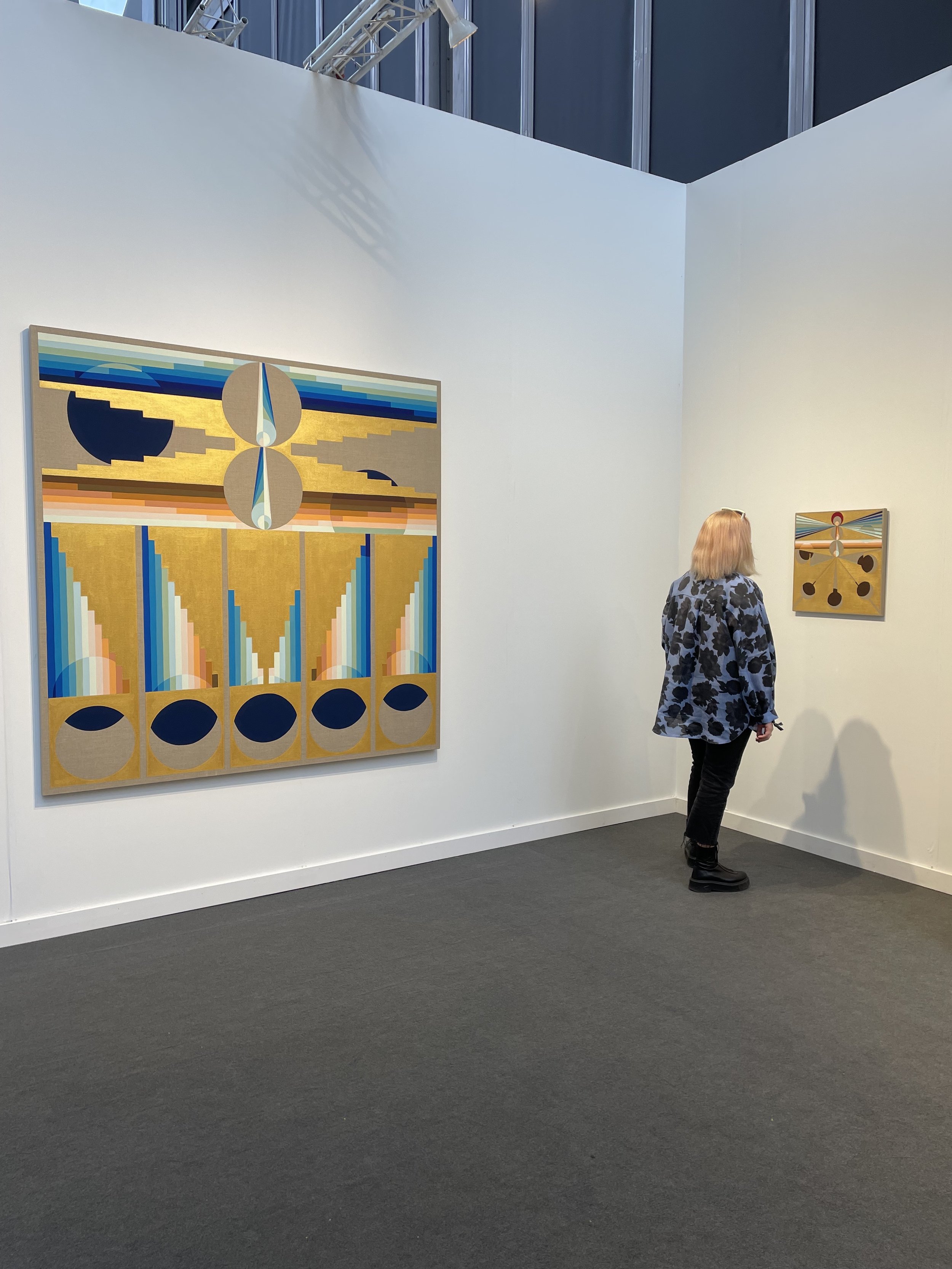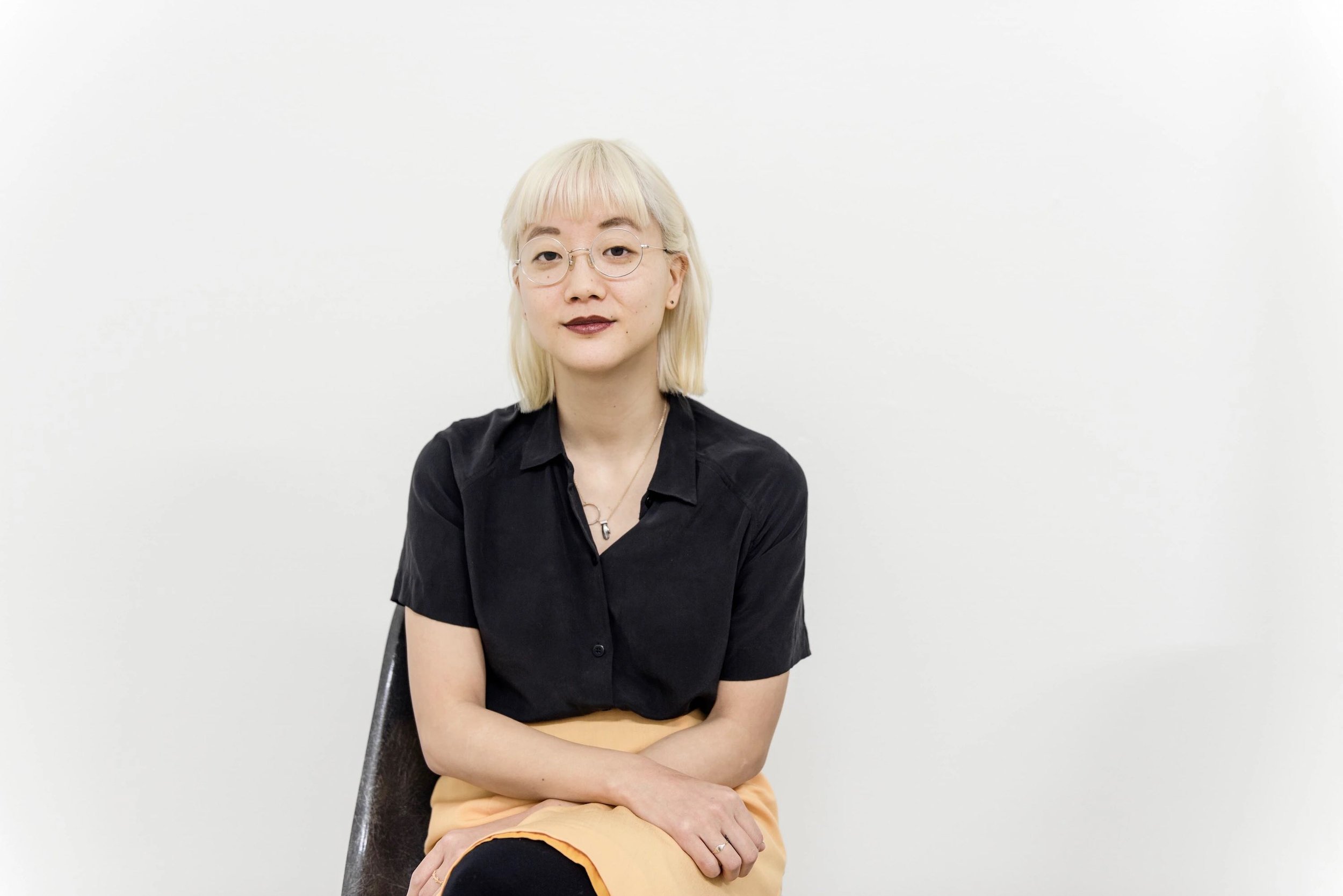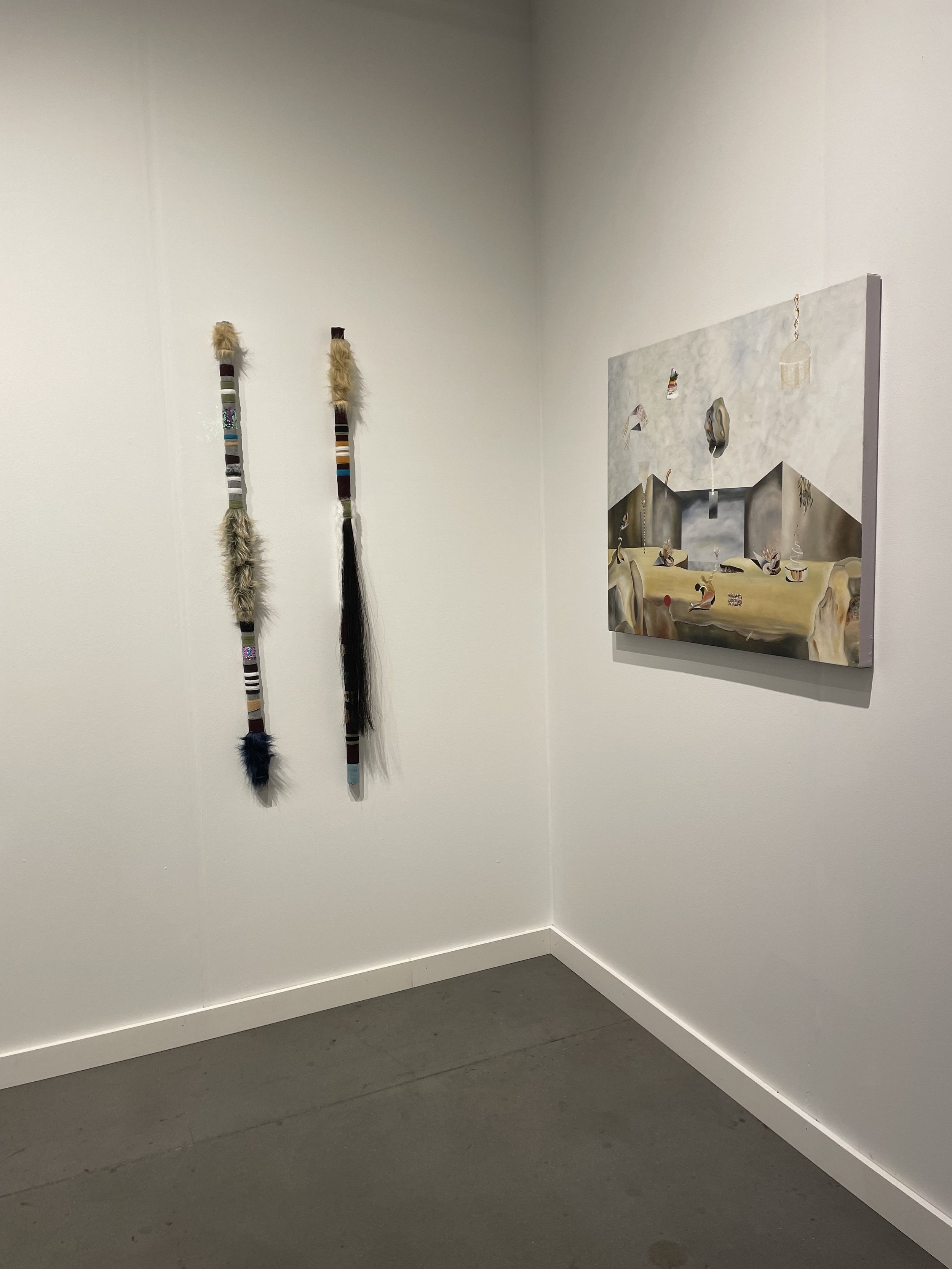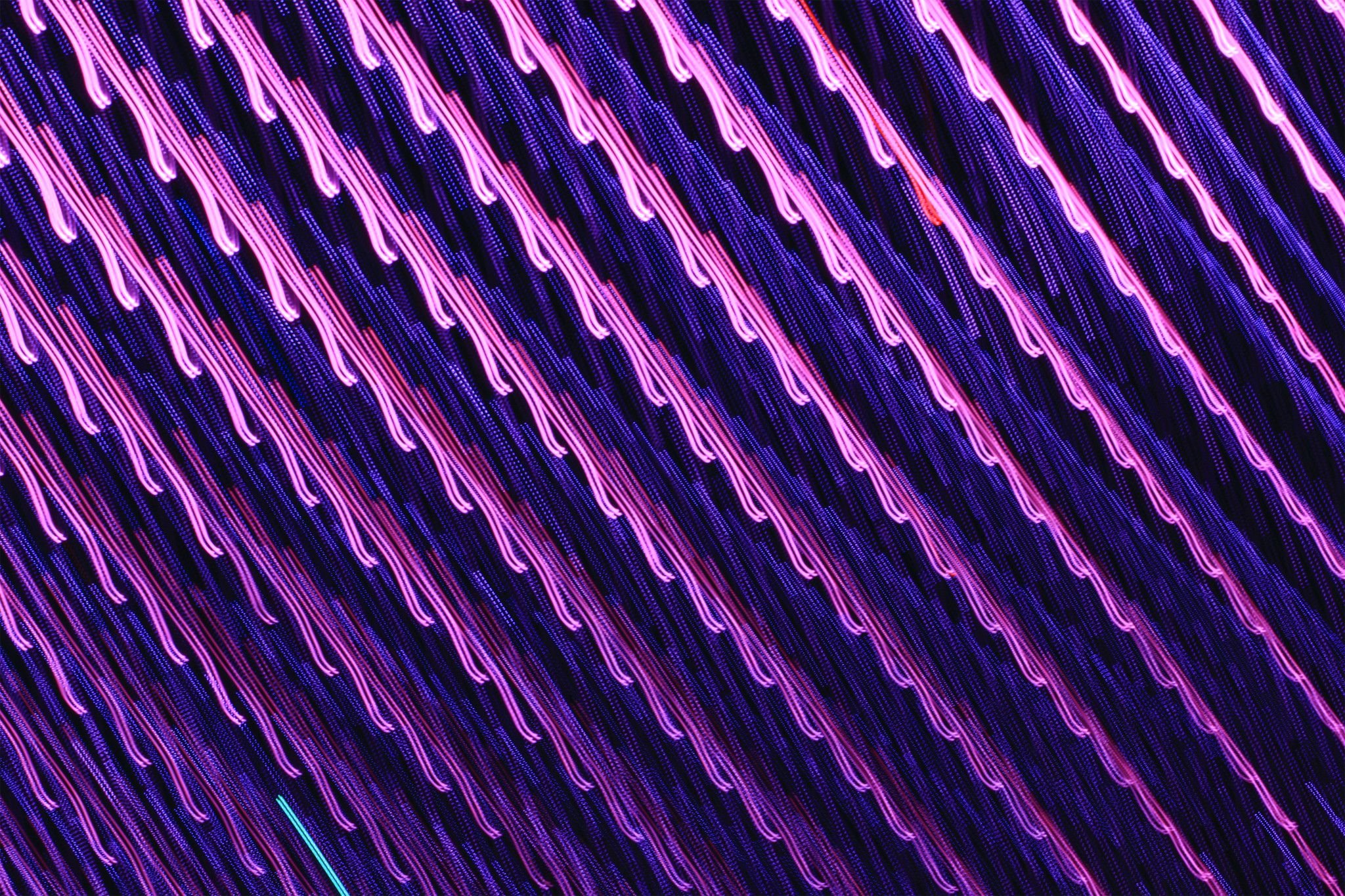Broadened Perspectives: Highlights from Frieze New York 2022
Last month, our Art + Curatorial Manager Laura Beshears and Creative Lead Laurenn Machin were in New York City taking in the sights, sounds, and experiences of Frieze New York, one of the largest global exhibitions in the contemporary art scene. With sibling fairs in London and Los Angeles, this year’s marked Frieze’s 10th anniversary in New York City, held at The Shed in Hudson Yards.
While there was a mecca of incredible talented represented by blue chip and emerging galleries alike, there were a few whose work particularly spoke to our team and left an inspired mark on their visit. This curated roundup of select diverse artists highlights those whose practices urge an expansion of perspectives and offer different modes of perceiving ourselves, our environments, our histories and heritage, and our lived realities.
Christine Sun Kim
© Sara Linderoth / Artnews
Christine Sun Kim is a deaf Korean-American artist who was born in 1980 in Orange County, California, and currently lives and works in Berlin, Germany. Addressing language, sound, and movement, her practice explores the differences and disconnects between hearing and deaf cultures and dives deep into different modes of expression between these two cultures. After graduating from the Rochester Institute of Technology, Kim catapulted into the contemporary art scene, being named a TED Fellow in 2013 and 2015, featured in the Museum of Modern Art’s first exhibition on sound art, and showcased in the Whitney Biennial in 2019.
For her works on view at Frieze, she focuses on the words owe, afford, and debt. These three words in written and spoken English have the same sign in American Sign Language, but it’s the pace and intensity of the motion that allows the signer to add nuance and further meaning to the word.
This draws parallels to hearing culture: the meaning of a spoken word can change based on the volume, inflection, and tone of the speaker. Her work serves as a reminder of the richness of language and the multi-faceted nature of communication. Expression can be conveyed and received not only verbally and auditorily but also visually and physically through movement and gesture.
Learn more from Christine Sun Kim through her feature in Art Basel
Charles Gaines
© Los Angeles Times
Los Angeles-based conceptual artist Charles Gaines is a pivotal figure whose practice investigates the boundary between objectivity and subjectivity, control and emotion, and knowledge and experience. His work uses a rule-based system to generate intricate and seemingly free-flowing compositions.
His systems have an arbitrary relationship to the subject that’s being rendered, creating a divide between the artist and his work as well as a separation between the subject and the representation of that subject. This parallels the separation between – to use an example from Gaines’ work – a tree and how viewers experience that tree, and it demonstrates that there is indeed a difference between reality and perception.
Earlier in his career, in the ‘70s, Gaines’ systems-based approach drew the artist criticism for producing “white art” that failed to represent the Black experience – introducing interesting dialogue around what it means to be an artist, what it means to be a Black artist, and what it means to create “Black art.” Yet, unlike other conceptual artists of his generation, Gaines has never aimed to deplete his work of deeper meaning. While his compositions avoid obvious interpretation, “[t]he concept of identity politics has played a central role within Gaines’ oeuvre, and the radical approach he employs addresses issues of race in ways that transcend the limits of representation” (Hauser & Wirth).
Read Gaines’ featured Frieze interview with poet Harmony Holiday to hear more from him on his practice and experience.
Eamon Ore-Giron
© James Cohen
Eamon Ore-Giron, a Peruvian and Irish-American artist born in Tucson, Arizona, is a multi-disciplinary artist who works across a wide variety of media including painting, video, performance, and music production.
His works operate within the realm of ‘geometric abstraction’, exploring various ways in which this art form is comprised of, and stems from, a multitude of cross-cultural influences. With waning vision in his right eye, Ore-Giron attributes his flat, constructivist planes in his artwork to this condition, creating simple visual codes that can be interpreted in a number of different ways by the viewer (Frieze, 2020).
The artwork featured in this year’s booth at James Cohan are part of his Infinite Regress series, which pulls inspiration from sources across time and cultures – the forms in his compositions reference Incan jewelry, Brazilian Neo-Concretism, architectural structures, and textiles.
Through placing these aesthetic references in conversation with one another, his compositions allow us to bring together the past and present, understanding the connection between global forms and, by extension, ideas, concepts, and histories from vastly different cultures.
REBECCA SHARP
© Rebecca Sharp
Rebecca Sharp is a São Paulo-born emerging artist who lives and works between Brazil and Colorado. Influenced by the natural landscapes that surround her, as well as architecture and human-built spaces and interiors, Sharp’s surrealist approach takes her viewers to otherworldly places that challenge logic and reason.
In her work, we can individually identify common objects that define these various environments: the mountains, rocks, and trees of the outdoors, or the coffee pots, oriental rugs, and candles of an everyday American household. In their entirety, however, each composition becomes a play on psychology, influenced by her many years of meditation practice; the scenes are derived from certain visions she’s experienced in her meditative states.
Moreover, the architectural frameworks she references are comprised of lines and angles that create perspective and depth, but they’re impossible spaces that defy our mind’s spatial rules. Through these pieces, we gain access to a realm not bound by our accepted modes of logic. Her approach was a welcomed addition to this year’s Frieze – all of Sharp’s showcased pieces were sold by the end of the fair.

















